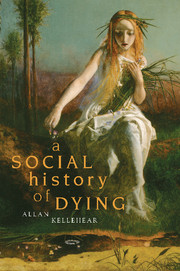Book contents
- Frontmatter
- Contents
- Acknowledgements
- Introduction
- Part I THE STONE AGE
- Part II THE PASTORAL AGE
- Part III THE AGE OF THE CITY
- Chapter Seven The Rise and Spread of Cities
- Chapter Eight The Birth of the Well-Managed Death
- Chapter Nine The Third Challenge: Taming Death
- Part IV THE COSMOPOLITAN AGE
- Conclusion
- Bibliography
- Index
Chapter Seven - The Rise and Spread of Cities
Published online by Cambridge University Press: 22 September 2009
- Frontmatter
- Contents
- Acknowledgements
- Introduction
- Part I THE STONE AGE
- Part II THE PASTORAL AGE
- Part III THE AGE OF THE CITY
- Chapter Seven The Rise and Spread of Cities
- Chapter Eight The Birth of the Well-Managed Death
- Chapter Nine The Third Challenge: Taming Death
- Part IV THE COSMOPOLITAN AGE
- Conclusion
- Bibliography
- Index
Summary
How and why did cities evolve? Lewis Mumford (1961), one of our greatest urban historians and commentators, has argued that the development of cities may have its natural origins in the way all living organisms problem-solve some fundamental survival issues. There are early tensions and trade-offs, he argues (1961: 5–6), between, say, the free movement of protozoa versus the settled life of the oyster. Security is always traded for adventure and newness, and vice versa.
Even in free-movement cultures, animals come together, if just temporarily, for good shelter, good feeding, breeding or rearing young. As we have recorded for many hunter-gatherers, defensive locations, a sense of territory and returning to the same important site year after year have been important to some human groups. However, these developments are echoed in the life of other animals such as birds. Furthermore, beavers and platypus not only simply settle but also build and remould their environment in the way of many human settlements. The engineering feats and energy of humanity have simpler and earlier parallels in the animal kingdom because after all, as I have argued in the opening chapter, these are our own origins.
But Mumford further observes that the animal equivalent of cities can be illustrated by the beehive, termitary and anthill.
- Type
- Chapter
- Information
- A Social History of Dying , pp. 125 - 146Publisher: Cambridge University PressPrint publication year: 2007



